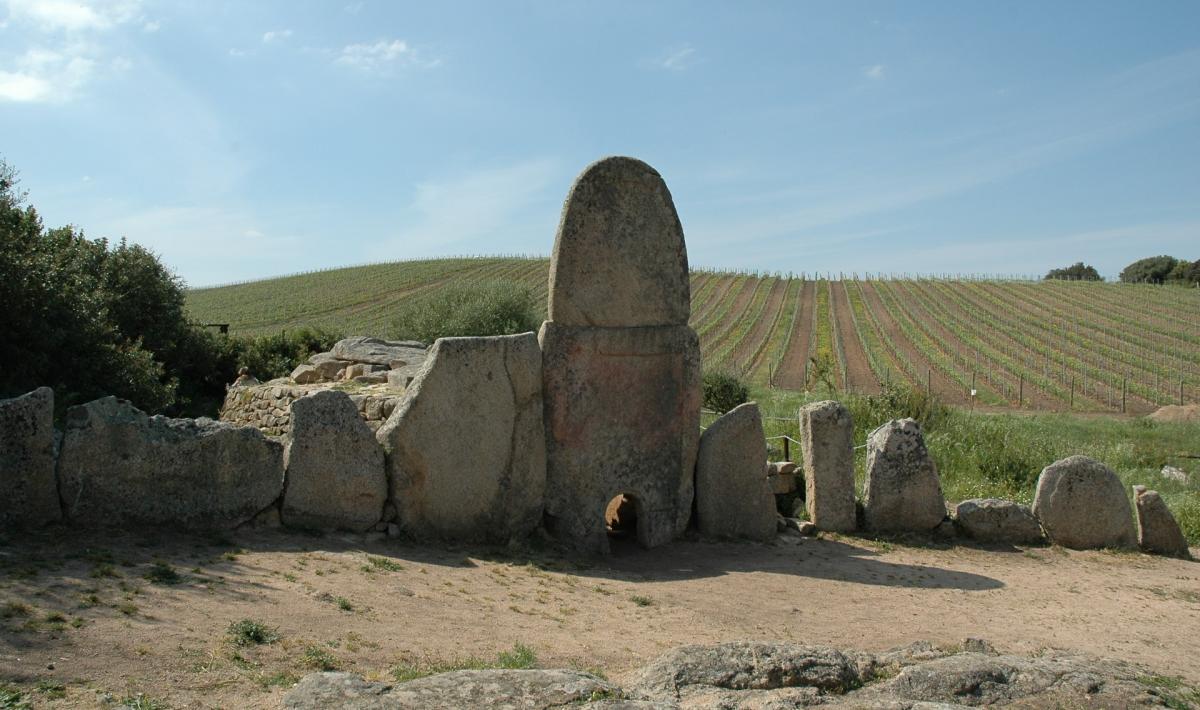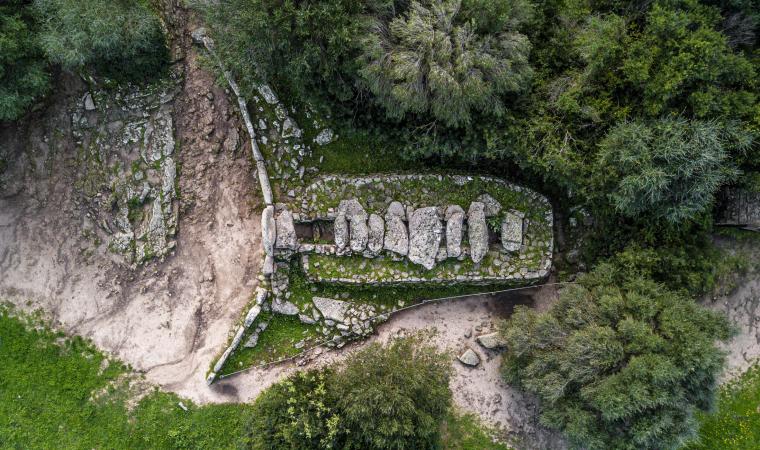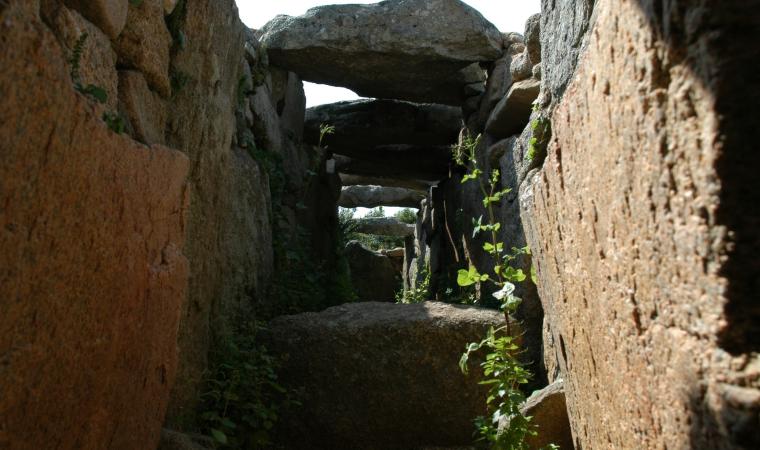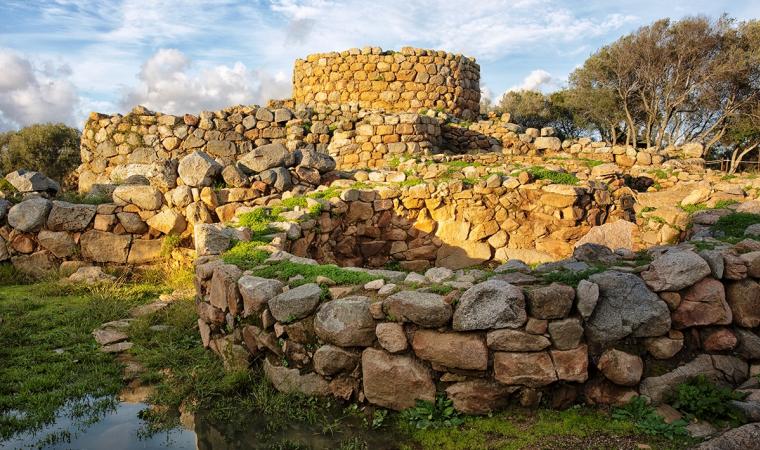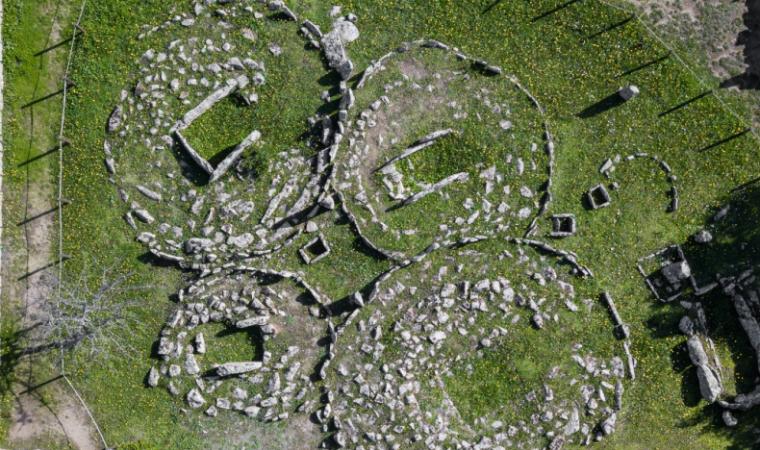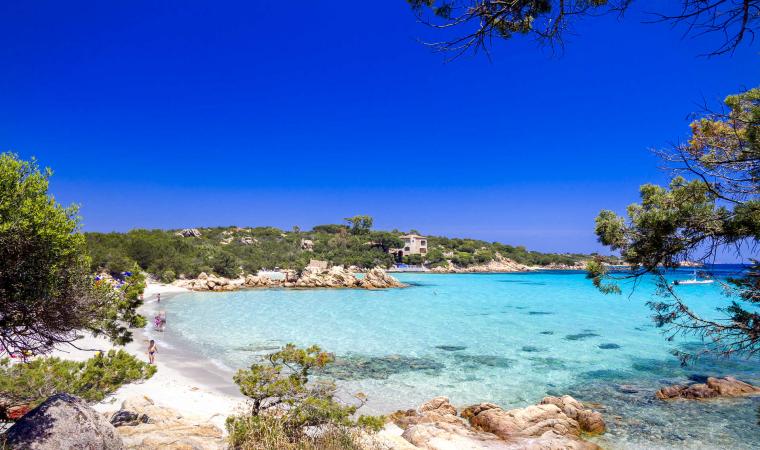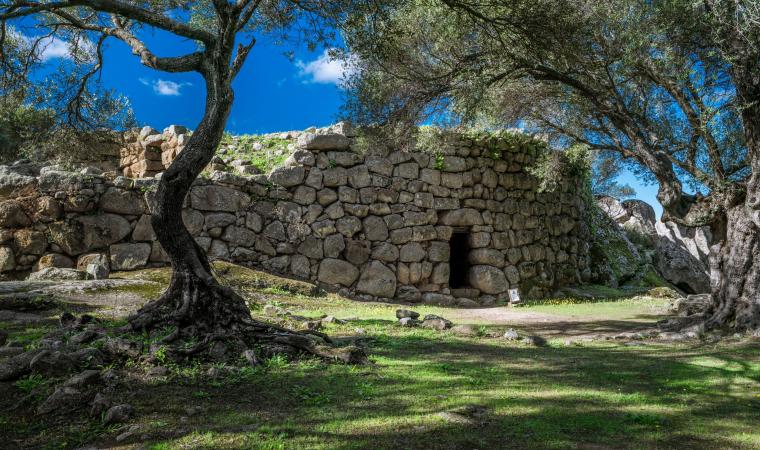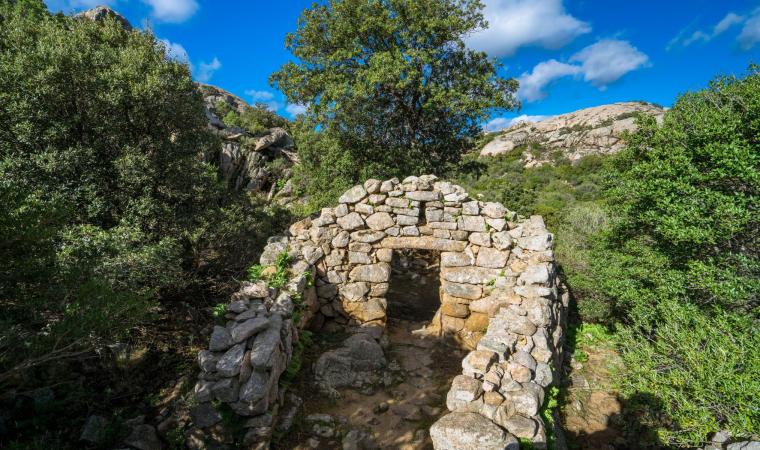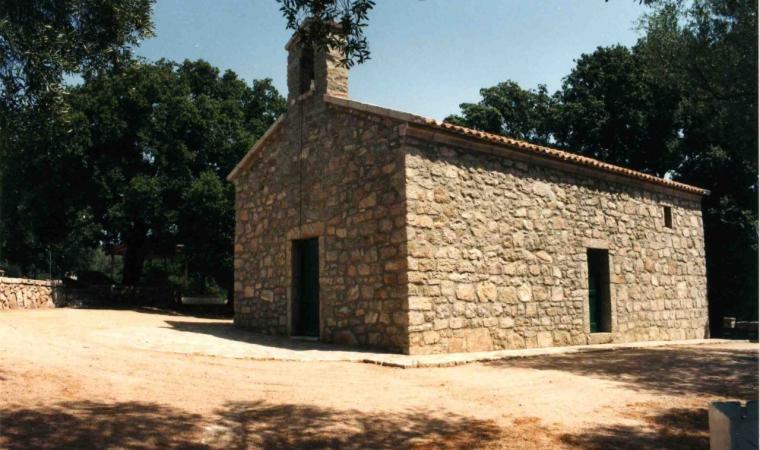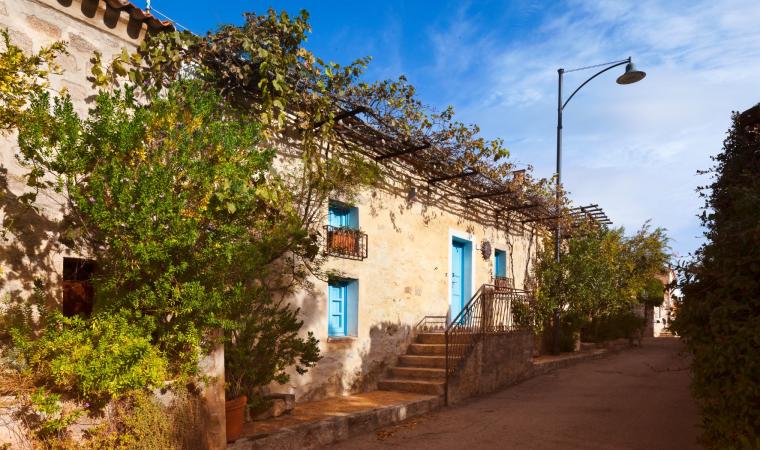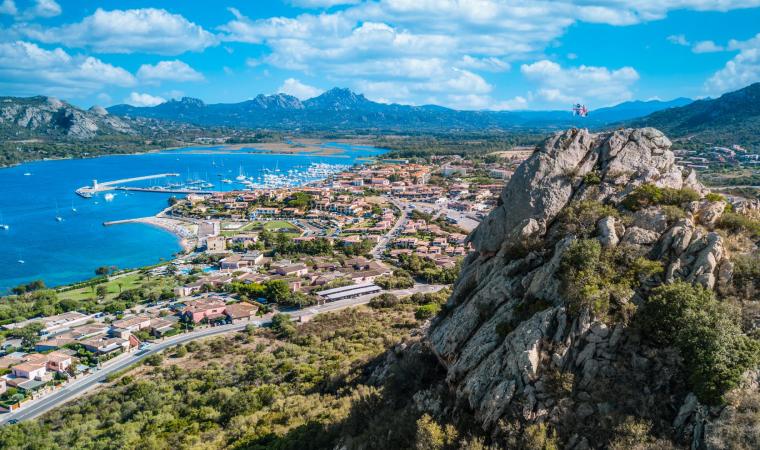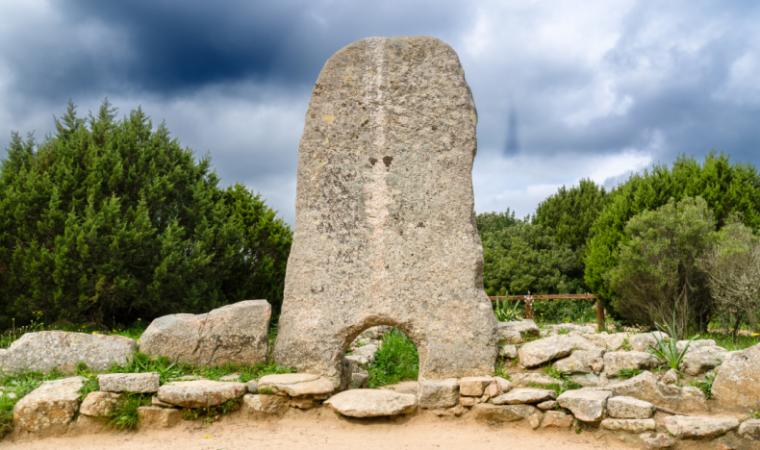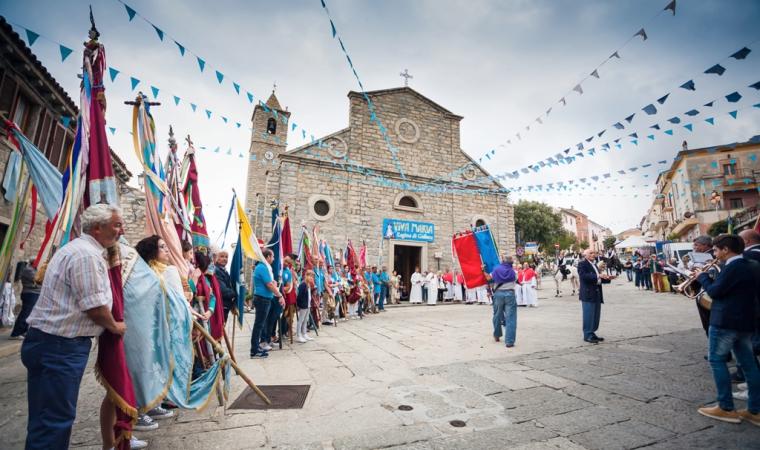It bears witness to the evolution of the building techniques used on the prehistoric tombs and contains what many consider to be the highest ‘façade’ known to date among the Sardinian megalithic tombs. It is located a short distance from one of the most important Nuragic settlements in Gallura, for which it may have served as a ‘cemetery’. The Giants’ Tomb of Coddu Vecchiu – also known as Coddu Vecchju or ‘Ecchju – is located in the territory of Arzachena, in the locality of Capichera, just 700 metres from the La Prisgiona nuraghe. Built from local granite, it was originally a tunnel tomb, of the allée couverte type. The first construction phase probably dates back to the Early Bronze Age, around the 18th century BC. Later on, during the Middle Bronze Age - that is, between the 16th and 14th centuries BC. -, the tomb was ‘transformed’ into a Giants’ Tomb, with the addition of the front exedra and the curved stele, of an exceptional size: with its four metres, it is considered the tallest on the island.
The front is semicircular and made with orthostatic stone slabs, meaning fixed into the ground. You will notice that their height decreases towards the ends, while the stele stands out in the centre and is made of two overlapping slabs, both decorated with a raised frame. At the base of the lower slab, there is a door that leads to the tomb corridor. The room has a rectangular layout and is about nine metres long, with a paved floor. The internal surface is made up of slabs laid on edge, with rows of stones running above them, the function of which is to support the flat arch slabs that form the roof. The external surface is also made up of rows of medium-sized stones. Everything, during the tomb’s period of ‘activity’, was covered by a mound of earth and stones. During the excavations, grave goods were found, including pans, bowls, pots and rolling dishes with engraved decorations.
About 200 metres from the tomb, a few rows of the Demuro single-tower nuraghe can still be seen. Then, heading south-east, you can visit one of the most fascinating Bronze Age complexes in Sardinia, made up of a nuraghe and the village of La Prisgiona. The main building consists of a keep and two side towers connected by a bastion and surrounded by a wall. Outside, there were about a hundred huts, with living areas, storehouses and artisan ‘workshops’. The archaeological remains in the area are surrounded by hills covered in Mediterranean scrub and vineyards. The area is, in fact, renowned for the production of Vermentino grapes, from which the only DOCG wine in Sardinia is obtained. You can enjoy it as an accompaniment to tasty Gallura cuisine, or as an aperitif after a day in the sun on the enchanting Costa Smeralda beaches.

